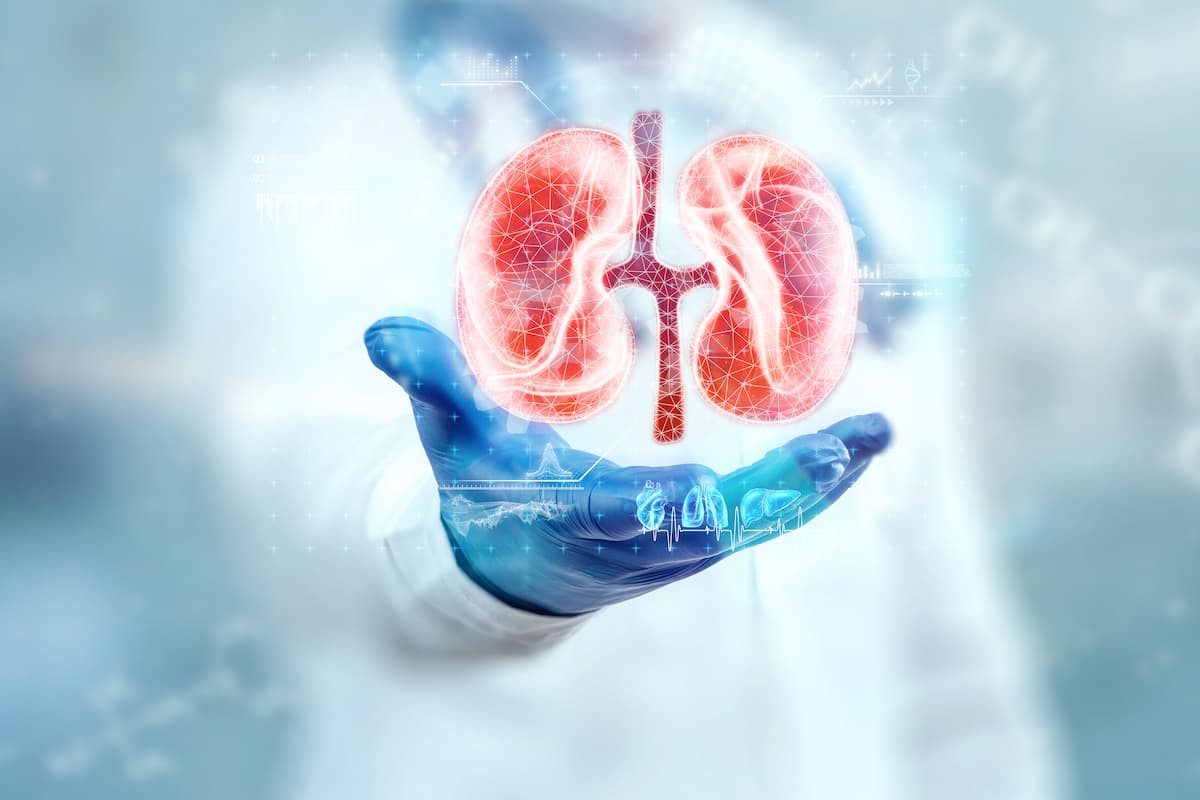- Center on Health Equity & Access
- Clinical
- Health Care Cost
- Health Care Delivery
- Insurance
- Policy
- Technology
- Value-Based Care
Altered Trace–Metal Homeostasis Linked to CKD Pathogenesis
Metallomic correlations suggest environmental and metabolic metals act together to accelerate renal damage.
Altered trace–metal homeostasis contributes to both the development and progression of chronic kidney disease (CKD), according to an extensive comparative study published in the International Journal of General Medicine. The investigation is among the first to profile 26 circulating metal elements comprehensively, collectively known as the "metallome,” in patients with CKD, revealing distinct signatures that correlate with disease onset and progression.1
CKD continues to rise as a significant global health burden, as mortality and disability from CKD are increasing faster than for any other noncommunicable disease. According to the World Health Organization, it ranked as the 11th leading cause of death worldwide and is projected to become the fifth leading cause by 2050.2
Analysis revealed that compared with healthy individuals, patients with CKD demonstrated widespread disturbances in serum metal levels. | Image credit: Aliaksandr Marko - stock.adobe.com

Investigators from Southwest Medical University and Mianyang Central Hospital in China conducted a cross-sectional analysis of 341 patients with CKD and 60 healthy controls.1 Serum samples were analyzed using inductively coupled plasma-mass spectrometry (ICP-MS) to quantify 26 metal elements, and the results were compared with kidney function markers, including creatinine, urea, and cystatin C. Participants with CKD represented a full range of disease stages (KDIGO G1-G5). "The application of metallome profiling has been explored in cancer, thyroid disorders, leukemia, and neurodegenerative diseases. However, its role in CKD remains underexplored," the authors noted, whose "aim was to explore the influence of these elements on CKD onset and progression, with the goal of identifying potential risk factors for disease onset and progression."
Analysis revealed that compared with healthy individuals, patients with CKD demonstrated widespread disturbances in serum metal levels, including significantly elevated concentrations of lithium (Li), magnesium (Mg), aluminum (Al), calcium (Ca), vanadium (V), manganese (Mn), nickel (Ni), copper (Cu), gallium (Ga), selenium (Se), rubidium (Rb), molybdenum (Mo), tin (Sn), cesium (Cs), and lead (Pb) (all P < .05), whereas cobalt (Co), mercury (Hg), and uranium (U) were lower. Higher levels of Li, Al, V, Mo, Sn, and Cs were associated with poorer renal function, as reflected by higher urea and creatinine concentrations and a lower estimated GFR. In total, 14 of the 26 measured metals showed significant differences between the CKD and control groups, while iron (Fe), zinc (Zn), arsenic (As), and cadmium (Cd) did not exhibit significant differences.
"Previous studies have indicated that during CKD development, metal elements primarily impair renal function by directly damaging renal cells, inducing oxidative stress, and modulating aerobic metabolism, contributing to disease onset. In the progressive phase of CKD, the toxic effects of these elements worsen renal injury by disrupting intracellular signaling and influencing substance transport mechanisms, thereby accelerating disease progression," the researchers explain. Multivariate regression identified 6 elements as independent predictors of CKD onset, including Al (OR, 1.01; P < .001), V (OR, 1.52; P < .001), Ga (OR, 1.59; P = .021), Cs (OR, 1.03; P = .015), Pb (OR, 1.04; P < .001), and Co (OR, 0.03; P = .001). Elevated serum levels of Al, V, Ga, Cs, and Pb were linked with increased risk, while Co appeared to exert a protective effect.
Disease progression, as assessed by eGFR staging, was independently associated with higher concentrations of Li (OR, 1.28), V (OR, 1.01), Mo (OR, 2.28), and Cs (OR, 2.84). Among these, Mo showed the strongest relationship with declining renal function, with its odds ratio increasing from 4.75 at CKD stage G2 to 16.43 at stage G5, corresponding directly with the worsening eGFR. Li followed a similar trajectory, with odds ratios rising from 1.62 to 2.14 across disease stages.
Receiver operating characteristic (ROC) analyses further supported the diagnostic potential of these findings. V achieved the best individual performance for identifying CKD (AUC, 0.84), while Mo best predicted advanced disease (AUC, 0.81). Combining V with Pb improved diagnostic accuracy to an AUC of 0.93, suggesting that metallomic profiles could eventually complement existing laboratory assessments for early CKD detection and progression monitoring.
Correlation analyses revealed complex relationships among key metals. Strong positive associations were observed between Al and V (r = 0.821), Al and Ga (r = 0.717), and V and Ga (r = 0.646), while Co showed an inverse correlation (r ≈ –0.4). These findings suggest that both synergistic and antagonistic effects may influence oxidative stress and metabolic homeostasis. Pathway enrichment analyses linked Pb and Co to aerobic metabolism, while Li and Mo were involved in ion transport and transmembrane signaling processes essential for renal cell survival.
Due to the single-center, cross-sectional study design, causality cannot be inferred, and information on environmental, dietary, or occupational exposures was not available. However, the data reinforce that both environmental and metabolic metal exposures are not mere bystanders but active contributors to CKD risk and progression. "Thus, understanding these metabolic profiles may be valuable for disease diagnosis, treatment, and maintaining overall health," the researchers suggest, adding that monitoring serum V, Pb, and Mo may improve early detection and risk assessment in CKD.
References
1. Jiang J, Hu L, Dai C, Zhang B, Chen X, Yang Y, Feng J. Serum metallomefeatures and their effects on chronic kidney disease: a comparative study. Int J Gen Med. Published online October 1, 2025 doi:10.2147/IJGM.S535508
2. World Health Organization (WHO). Reducing the burden of noncommunicable diseases through promotion of kidney health and strengthening prevention and control of kidney disease. 2025. https://apps.who.int/gb/ebwha/pdf_files/EB156/B156_CONF6-en.pdf
